Cervical cancer screening (Indicator 25)
Last update
The indicator describes the following: The proportion of women aged 25-69 who have been screened for cervical cancer in the national screening programme at least once, or more often.
This indicator is part of Target (9): Essential medicines and basic technologies for the treatment of serious non-communicable diseases.
From July 1, 2023, it is recommended that women be screened with an HPV test for cervical cancer precursors every 5 years for those aged 25-69. Previously, national recommendations were for cytology screening every three years for the entire target group, and there has been a gradual transition to HPV screening from 2015 to 2023.
The gradual transition to HPV screening has presented challenges in calculating coverage during a transitional period as women have been recommended screening intervals of both 3 and 5 years depending on the analysis method of the last screening test. Figure 1 shows the proportion of women who have taken at least one test within the recommended interval for women in different age groups. The recommended screening interval is here based on the primary screening method recorded on the test result.
Breast cancer screening is not defined as one the NCD indicators.
Results
- In the target group for the Norwegian Cervical Cancer Screening Program, women aged 25-69 years, participation in the screening program was 73 per cent in 2023.
- A weak declining trend was observed from 2004 to 2014, but from 2015 there has been a weak increasing trend, particularly among the youngest women.

Ages 25–33 | Ages 34–54 | Ages 55–69 | Ages 25–69 | |
1994 | 81 | 72 | 47 | 68 |
1995 | 83 | 76 | 53 | 72 |
1996 | 83 | 77 | 58 | 74 |
1997 | 82 | 77 | 61 | 75 |
1998 | 81 | 78 | 65 | 75 |
1999 | 81 | 78 | 67 | 76 |
2000 | 79 | 77 | 67 | 75 |
2001 | 78 | 77 | 68 | 75 |
2002 | 78 | 78 | 71 | 77 |
2003 | 77 | 79 | 73 | 77 |
2004 | 77 | 79 | 74 | 77 |
2005 | 75 | 78 | 73 | 76 |
2006 | 73 | 77 | 72 | 75 |
2007 | 72 | 76 | 72 | 74 |
2008 | 70 | 76 | 71 | 73 |
2009 | 68 | 75 | 71 | 72 |
2010 | 66 | 74 | 70 | 71 |
2011 | 65 | 73 | 70 | 71 |
2012 | 63 | 72 | 69 | 69 |
2013 | 63 | 71 | 68 | 69 |
2014 | 63 | 71 | 68 | 68 |
2015 | 65 | 72 | 68 | 69 |
2016 | 66 | 72 | 68 | 70 |
2017 | 69 | 73 | 69 | 71 |
2018 | 70 | 74 | 70 | 72 |
2019 | 69 | 74 | 70 | 72 |
2020 | 68 | 73 | 69 | 71 |
2021 | 70 | 74 | 69 | 72 |
2022 | 70 | 75 | 70 | 72 |
2023 | 70 | 75 | 70 | 73 |
Data source: The Cancer Registry of Norway
The data source for this indicator is the annual report by the Norwegian Cervical Cancer Screening Program. Below is a description and definitions.
Description
The Cancer Registry of Norway manages the national screening program in which all women between 25 and 69 years of age receive letters reminding them to take a cervical sample with a doctor or midwife two months before the recommended time for a new test, i.e., 2 years and 10 months or 4 years and 10 months after the last normal cervical sample. The Norwegian Cervical Cancer Screening Program has been nationwide since 1995 and an annual report is published.
- Cancer Registry of Norway
- Norwegian Cervical Cancer Screening Program
- Annual reports from the Norwegian Cervical Cancer Screening Program (in Norwegian)
Effect measure
Participation in percent. This describes the proportion of women who have taken at least one test in the last 3.5 years or 5.5 years, depending on the analysis method of the last cervical sample.
Participation is calculated based on the population, minus those who have reserved against receiving letters from the Cervical Cancer Screening Program, those who have had gynecological cancer, or those who have had their cervix removed for other reasons. The structure of the Cervical Cancer Screening Program requires that women themselves book an appointment with a doctor and that annual reminders are sent if no new cervical sample has been registered.
Global indicator definition
Indicator 25. Proportion of women between the ages of 30 and 49 screened for cervical cancer at least once, or more often, and for lower or higher age groups according to national programmes or policies.
National adaptation
In Norway, all women between 25 and 69 years of age are screened. This is a wider age range than in WHO’s indicator definition.

